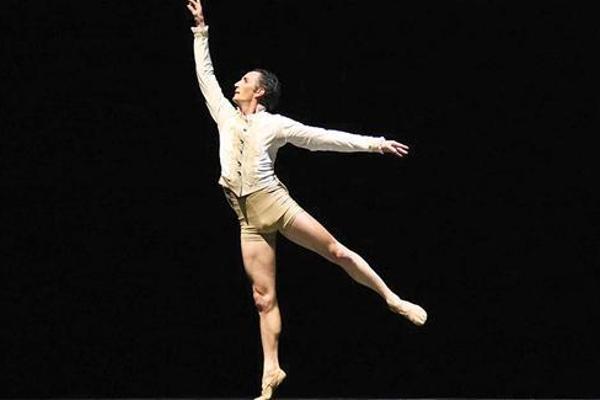Turkish ballet dancers seek world stages
SAMSUN


Speaking to state-run Anadolu Agency, Ada said interest for opera and ballet is increasing every other day in Turkey, which has seen its sixth State Opera and Ballet hall establish in the northern province of Samsun nine years ago after Ankara, Istanbul, İzmir, Mersin and Antalya.
He said the need for new dancers increased in parallel with the increasing number of opera and ballet groups in Turkey, adding that they train new dancers for opera and ballet in various courses.
Ada said they had difficulties finding ballerinas for opera and ballet events, which is why they filled the vacancies with foreign dancers, while adding that Turkish ballet in the recent years has seen successful dancers in the State Opera and Ballet.
“People of all segments of the society and cultures send their children to ballet classes. We did not have such opportunities in the past, but now there are state-sponsored halls for opera and ballet in six cities. Symbolic fees are paid in courses that are opened in every city. As for dancers, the world’s best ones are in Turkey. Some of them have golden medals; they win medals every year. They generally live in big cities like Ankara, Istanbul and İzmir and dance in world-famous halls. They are great,” he said.
Ada said the history of dance is as old as the history of humanity.
“Moving with music is one of the most important things of being a human. The oldest human groups danced in harmony and it turned into an art. This art is the source of pride for the State Opera and Ballet. It disciplines our body more than sports do. The reason is very simple; you need to be in harmony with music.
Generally, there is no music in sports but ballet is performed with music and your body needs to be synchronized with it. This is a very big art,” he added.
Ballerinas represent Turkey abroad
Kuzey Kıyıca, a 33-year-old ballet dancer for the Ankara State Opera and Ballet, said he has been dancing for 23 years.
Winning a scholarship from the Kirov Academy in the U.S. 17 years ago, Kıyıca was invited to the Universal Ballet Campani in Seoul after a three-year education where he danced for six years. Kıyıcan said he had the privilege to work with successful choreographers in classical and neo-classical dances.
Kıyıca said he made it to the finals in the young ballerinas’ competition in the U.S. in 2002 before he returned to Turkey in 2009 and began dancing for the Ankara State Opera and Ballet.
According to him, Turkish people have the talent for ballet and the country raises valuable artists every generation. “We have dancers who have represented Turkey in international competitions. As I see, families show great interest to ballet classes. They see the way their children walk and their postures have bettered and want them to continue this education,” he added.
Children can go to conservatories and become professional dancers, he encouraged.
Cankat Özer, the chief choreographer for Samsun Opera and Ballet chief, 36, said he inherited his father’s profession.
Starting his ballet education in 1992 at Dokuz Eylül University’s state conservatory, Özer attended Hacettepe University’s state conservatory in 1998. His professional career at the State Opera and Ballet began in 2000 where he became a principal dancer in 2003. Özer is continuing his career as a director due to some injuries and operations that he underwent.
Özer said he performed in nearly 1,200 shows in galas and shows in Turkey and abroad.
“Ballet made a great progress in the last 10 years. Ballet dancer Tan Sağtürk made great contributions to Turkish ballet. The number of dancers also increased. There are ballet schools and private courses. We can promote more and have more dancers or create bigger projects,” he said.
According to the Turkish Statistical Institute (TÜİK), there are 2,444 artists, including guest artists, working for the State Opera and Ballets. Among them, 44.9 percent are female dancers.
In the 2015-2016 season, 1,424 artists worked for orchestras, choirs and groups affiliated to the Fine Arts General Directorate. Some 392 artists worked in orchestras, while 665 in choirs and 367 in groups.
